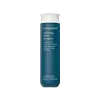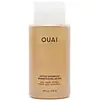What's inside
What's inside
 Key Ingredients
Key Ingredients

No key ingredients
 Benefits
Benefits

 Concerns
Concerns

 Ingredients Side-by-side
Ingredients Side-by-side

Water
Skin ConditioningSodium Lauroyl Methyl Isethionate
CleansingCocamidopropyl Hydroxysultaine
CleansingSodium Methyl Cocoyl Taurate
CleansingDecyl Glucoside
CleansingCetearyl Alcohol
EmollientGlyceryl Caprylate/Caprate
EmollientCetyl Alcohol
EmollientCetyl Stearate
EmollientCharcoal Powder
AbrasiveBetaine
HumectantSodium Cocoyl Alaninate
Tetrasodium Glutamate Diacetate
Hydroxyphenyl Propamidobenzoic Acid
Skin ConditioningSodium Polystyrene Sulfonate
Emulsion StabilisingPEG-5 Ethylhexanoate
EmulsifyingGlyceryl Stearate
EmollientIsostearyl Isostearate
EmollientStearic Acid
CleansingPotassium Cetyl Phosphate
EmulsifyingGlycerin
HumectantSteareth-20
CleansingPEG-75 Stearate
Trideceth-9
EmulsifyingCeteth-20
CleansingAcrylates/C10-30 Alkyl Acrylate Crosspolymer
Emulsion StabilisingParfum
MaskingSodium Hydroxide
BufferingPropanediol
SolventEthylhexylglycerin
Skin ConditioningHydroxyacetophenone
AntioxidantLinalool
PerfumingHexyl Cinnamal
PerfumingCitronellol
PerfumingLimonene
PerfumingWater, Sodium Lauroyl Methyl Isethionate, Cocamidopropyl Hydroxysultaine, Sodium Methyl Cocoyl Taurate, Decyl Glucoside, Cetearyl Alcohol, Glyceryl Caprylate/Caprate, Cetyl Alcohol, Cetyl Stearate, Charcoal Powder, Betaine, Sodium Cocoyl Alaninate, Tetrasodium Glutamate Diacetate, Hydroxyphenyl Propamidobenzoic Acid, Sodium Polystyrene Sulfonate, PEG-5 Ethylhexanoate, Glyceryl Stearate, Isostearyl Isostearate, Stearic Acid, Potassium Cetyl Phosphate, Glycerin, Steareth-20, PEG-75 Stearate, Trideceth-9, Ceteth-20, Acrylates/C10-30 Alkyl Acrylate Crosspolymer, Parfum, Sodium Hydroxide, Propanediol, Ethylhexylglycerin, Hydroxyacetophenone, Linalool, Hexyl Cinnamal, Citronellol, Limonene
Water
Skin ConditioningSodium C14-16 Olefin Sulfonate
CleansingSodium Lauroyl Methyl Isethionate
CleansingCocamidopropyl Betaine
CleansingDecyl Glucoside
CleansingAcrylates Copolymer
Cocamide Mipa
EmulsifyingParfum
MaskingPolysorbate 20
EmulsifyingHydrolyzed Keratin
HumectantHydroxypropyl Guar Hydroxypropyltrimonium Chloride
Vinegar
PEG-150 Distearate
EmulsifyingPolyquaternium-7
Glycerin
HumectantBenzophenone-4
UV AbsorberSodium Chloride
MaskingSodium Hydroxide
BufferingTetrasodium EDTA
Trisodium Ethylenediamine Disuccinate
Isopropyl Alcohol
SolventPropylene Glycol
HumectantCitric Acid
BufferingDisodium EDTA
Chlorphenesin
AntimicrobialSodium Benzoate
MaskingPhenoxyethanol
PreservativePotassium Sorbate
PreservativeLinalool
PerfumingCitronellol
PerfumingCI 14700
Cosmetic ColorantCI 19140
Cosmetic ColorantCI 61570
Cosmetic ColorantWater, Sodium C14-16 Olefin Sulfonate, Sodium Lauroyl Methyl Isethionate, Cocamidopropyl Betaine, Decyl Glucoside, Acrylates Copolymer, Cocamide Mipa, Parfum, Polysorbate 20, Hydrolyzed Keratin, Hydroxypropyl Guar Hydroxypropyltrimonium Chloride, Vinegar, PEG-150 Distearate, Polyquaternium-7, Glycerin, Benzophenone-4, Sodium Chloride, Sodium Hydroxide, Tetrasodium EDTA, Trisodium Ethylenediamine Disuccinate, Isopropyl Alcohol, Propylene Glycol, Citric Acid, Disodium EDTA, Chlorphenesin, Sodium Benzoate, Phenoxyethanol, Potassium Sorbate, Linalool, Citronellol, CI 14700, CI 19140, CI 61570
 Reviews
Reviews

Ingredients Explained
These ingredients are found in both products.
Ingredients higher up in an ingredient list are typically present in a larger amount.
Citronellol is used to add fragrance/parfum to a product. It is often derived from plants such as roses. In fact, it can be found in many essential oils including geranium, lavender, neroli, and more. The scent of Citronellol is often described as "fresh, grassy, and citrus-like".
Since the Citronellol molecule is already unstable, Citronellol becomes irritating on the skin when exposed to air.
Citronellol is a modified terpene. Terpenes are unsaturated hydrocarbons found in plants. They make up the primary part of essential oils.
Citronellol is not able to be absorbed into deeper layers of the skin. It has low permeability,
Citronellol is also a natural insect repellent.
Learn more about CitronellolDecyl Glucoside is a glucose-based surfactant and emulsion stabilizer. It is created by reacting glucose with the fatty acids from plants.
Surfactants help clean the skin by trapping oil, sebum, and dirt to be washed away. As an emulsion stabilizer, it stabilizes the ingredients in a product by preventing them from separating.
This ingredient is biodegradable and non-toxic. This ingredient is commonly found in baby shampoos.
Decyl Glucoside is sometimes used to stabilize the UV filter Tinosorb.
Learn more about Decyl GlucosideGlycerin is already naturally found in your skin. It helps moisturize and protect your skin.
A study from 2016 found glycerin to be more effective as a humectant than AHAs and hyaluronic acid.
As a humectant, it helps the skin stay hydrated by pulling moisture to your skin. The low molecular weight of glycerin allows it to pull moisture into the deeper layers of your skin.
Hydrated skin improves your skin barrier; Your skin barrier helps protect against irritants and bacteria.
Glycerin has also been found to have antimicrobial and antiviral properties. Due to these properties, glycerin is often used in wound and burn treatments.
In cosmetics, glycerin is usually derived from plants such as soybean or palm. However, it can also be sourced from animals, such as tallow or animal fat.
This ingredient is organic, colorless, odorless, and non-toxic.
Glycerin is the name for this ingredient in American English. British English uses Glycerol/Glycerine.
Learn more about GlycerinLinalool is a fragrance and helps add scent to products. It's derived from common plants such as cinnamon, mint, citrus, and lavender.
Like Limonene, this ingredient oxidizes when exposed to air. Oxidized linalool can cause allergies and skin sensitivity.
This ingredient has a scent that is floral, spicy tropical, and citrus-like.
Learn more about LinaloolParfum is a catch-all term for an ingredient or more that is used to give a scent to products.
Also called "fragrance", this ingredient can be a blend of hundreds of chemicals or plant oils. This means every product with "fragrance" or "parfum" in the ingredients list is a different mixture.
For instance, Habanolide is a proprietary trade name for a specific aroma chemical. When used as a fragrance ingredient in cosmetics, most aroma chemicals fall under the broad labeling category of “FRAGRANCE” or “PARFUM” according to EU and US regulations.
The term 'parfum' or 'fragrance' is not regulated in many countries. In many cases, it is up to the brand to define this term.
For instance, many brands choose to label themselves as "fragrance-free" because they are not using synthetic fragrances. However, their products may still contain ingredients such as essential oils that are considered a fragrance by INCI standards.
One example is Calendula flower extract. Calendula is an essential oil that still imparts a scent or 'fragrance'.
Depending on the blend, the ingredients in the mixture can cause allergies and sensitivities on the skin. Some ingredients that are known EU allergens include linalool and citronellol.
Parfum can also be used to mask or cover an unpleasant scent.
The bottom line is: not all fragrances/parfum/ingredients are created equally. If you are worried about fragrances, we recommend taking a closer look at an ingredient. And of course, we always recommend speaking with a professional.
Learn more about ParfumSodium Hydroxide is also known as lye or caustic soda. It is used to adjust the pH of products; many ingredients require a specific pH to be effective.
In small amounts, sodium hydroxide is considered safe to use. However, large amounts may cause chemical burns due to its high alkaline.
Your skin has a natural pH and acid mantle. This acid mantle helps prevent harmful bacteria from breaking through. The acid mantle also helps keep your skin hydrated.
"Alkaline" refers to a high pH level. A low pH level would be considered acidic.
Learn more about Sodium HydroxideSodium Lauroyl Methyl Isethionate is a cleansing ingredient. It is a surfactant, meaning it helps gather dirt, oil, and other pollutants. This helps them be rinsed away easily.
Water. It's the most common cosmetic ingredient of all. You'll usually see it at the top of ingredient lists, meaning that it makes up the largest part of the product.
So why is it so popular? Water most often acts as a solvent - this means that it helps dissolve other ingredients into the formulation.
You'll also recognize water as that liquid we all need to stay alive. If you see this, drink a glass of water. Stay hydrated!
Learn more about Water